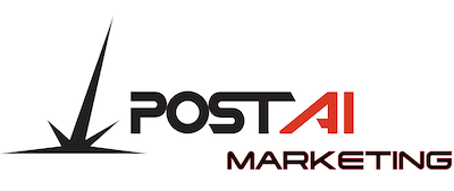Optimizing Email with AI: When to Hit Send
Delve into how AI can determine the optimal send times for email campaigns to maximize engagement.
AI EMAIL MARKETING


In the world of email marketing, timing is everything. The success of an email campaign often hinges on the moment it lands in a recipient's inbox. Sending an email at the wrong time can result in low open rates, decreased engagement, and missed opportunities. However, determining the perfect timing for each individual subscriber can be a daunting task.
Fortunately, advancements in artificial intelligence (AI) have revolutionized the way email marketers approach timing. AI-powered analytics can now analyze vast amounts of data to determine the optimal send times for each subscriber, maximizing engagement and improving overall campaign performance.
The Power of AI in Email Marketing
AI has transformed various industries, and email marketing is no exception. By harnessing the power of AI, marketers can gain valuable insights into their subscribers' behavior, preferences, and engagement patterns. This allows them to make data-driven decisions and optimize their email campaigns for maximum impact.
One company at the forefront of AI-driven email marketing optimization is Post AI Marketing. Post AI Marketing has developed a sophisticated AI analytics platform that analyzes a multitude of factors to determine the best time to send emails to individual subscribers.
Understanding the Importance of Timing
Timing plays a crucial role in email marketing success. Sending an email at the right moment can significantly increase the chances of it being opened, read, and acted upon. On the other hand, sending an email at the wrong time can result in it being buried in a crowded inbox or simply overlooked.
Traditionally, email marketers have relied on general best practices and industry benchmarks to determine the optimal send times. However, these approaches often overlook the unique preferences and behaviors of individual subscribers. This is where AI comes in.
How AI Determines the Optimal Send Times
AI analyzes a wide range of data points to determine the optimal send times for each subscriber. These data points include:
Historical Data: AI algorithms analyze past email engagement data to identify patterns and trends. By understanding when subscribers are most likely to open and engage with emails, AI can make informed decisions about the best send times.
Behavioral Data: AI takes into account individual subscriber behavior, such as the time of day they typically engage with emails, their response rates, and their preferred communication channels. This allows AI to personalize the timing of email sends based on each subscriber's unique habits.
Demographic Data: AI also considers demographic information, such as time zone and location, to ensure that emails are delivered at a convenient time for each subscriber.
By analyzing these data points, AI algorithms can generate personalized send time recommendations for each subscriber. This level of personalization ensures that emails are delivered at the most opportune moment, increasing the likelihood of engagement and conversion.
The Benefits of AI-Optimized Email Timing
Implementing AI-optimized email timing offers several benefits for email marketers:
Increased Open Rates: By sending emails at the optimal time, marketers can significantly increase open rates. When emails land in subscribers' inboxes at a time when they are most likely to check their emails, they are more likely to be opened and read.
Improved Engagement: AI-optimized email timing can also lead to increased engagement. When emails are delivered at a time when subscribers are most receptive, they are more likely to click on links, take desired actions, and interact with the content.
Higher Conversion Rates: Timing plays a critical role in driving conversions. By sending emails when subscribers are most likely to be in a buying mindset, marketers can increase the chances of converting leads into customers.
Enhanced Customer Experience: Personalized send times based on individual preferences improve the overall customer experience. When subscribers receive emails at a time that aligns with their routines and preferences, they are more likely to view the brand positively and engage with future emails.
Best Practices for AI-Optimized Email Timing
While AI can provide valuable insights into the optimal send times, it's important for email marketers to consider a few best practices:
Test and Refine: AI recommendations should be considered as a starting point. Marketers should continuously test and refine their email timing strategies based on the results and feedback they receive.
Segmentation: Segmenting subscribers based on their preferences, behaviors, and demographics allows for further personalization and optimization. AI can help identify the most effective send times for each segment, leading to improved campaign performance.
Monitor Changes: Subscriber behavior and preferences can change over time. Marketers should regularly monitor and update their email timing strategies to ensure they remain relevant and effective.
Conclusion
Timing is a critical factor in email marketing success. By leveraging AI-powered analytics, email marketers can optimize their email timing strategies for maximum engagement and conversion. Companies like Post AI Marketing are leading the way in using AI to analyze data and provide personalized send time recommendations for each subscriber. By understanding the unique preferences and behaviors of individual subscribers, marketers can send emails at the most opportune moments, resulting in increased open rates, improved engagement, and higher conversion rates. As AI continues to advance, the future of email marketing will undoubtedly be shaped by its ability to determine the optimal send times.
